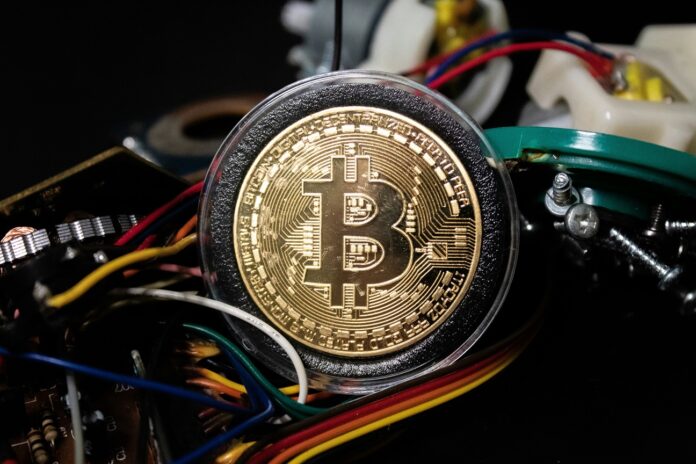On-chain data shows the Bitcoin network has been quite cheap recently, as the transaction fee per block has been near cycle lows.
Bitcoin Miners Have Been Receiving Low Fees Recently
As analyst James Van Straten pointed out in a new post on X, the BTC transaction fee has been floating around cycle lows recently. The “transaction fee” here naturally refers to the fee that users must attach with their transfers on the Bitcoin blockchain as a reward for the miner who processes them.
This metric’s value is generally directly related to the traffic that the network is observing. In times of high activity, transactions can stay stuck for long periods in the mempool, as the network only has a limited capacity to handle moves.
Users who are in a hurry may opt for higher-than-average fees during such periods so that the miners prioritize their moves. During especially congested periods, the average fee can blow up as many senders compete with each other to get transfers through first.
When there is little traffic on the blockchain, though, the users don’t have much incentive to pay a significant fee, so the average on the network tends to stay low in such periods.
One way to gauge the trend in the transaction fee over a long period is to measure the average fee paid to the miners per block. The chart below shows how this metric’s value has changed for the Bitcoin network over the past few years.
The value of the metric seems to have been quite low in recent days | Source: @jvs_btc on X
As the graph shows, the Bitcoin average fee paid per block has been pretty low recently. This suggests that the miners haven’t been earning much from fees.
In the same chart, data for the block subsidy (the total amount of rewards that miners receive per block) has also been displayed. It would appear that it has historically been quite rare for the transaction fees to match these rewards and at the current lows, the fee is also only a fraction of them.
The block subsidy and transaction fees combined make up for the entire revenue of the Bitcoin miners, but due to the imbalance between them, the former has been the main source of income for the miners.
While this has worked for these chain validators, it will not be the case forever. The BTC supply is limited, so miners eventually run out of block subsidies.
But even before that, there is a much more imminent threat posed by the halvings, periodic events where block rewards get permanently cut in half. Halvings occur every four years, with the next one coming up in about nine days.
At present, the BTC block subsidy is 6.25 BTC per block, but this halving would reduce it to 3.125 BTC. With every subsequent halving, this reward would only shrink further, meaning the main source of income for the miners would continue to get squeezed.
As such, the long-term future for the miners would lie in the transaction fees. This past year, the fee has matched the block reward in several instances, mainly fueled by the Inscription mania. Perhaps applications like the Inscriptions would be what will drive the fees in the future as well.
Straten has identified an interesting pattern in the fees’ trend. It would appear that fees picked up before the last halving and continued to rise after it. The analyst expects something similar to play out this time as well.
BTC Price
At the time of writing, Bitcoin is trading at around $69,400, up more than 3% over the past week.
Looks like the price of the asset has gone down recently | Source: BTCUSD on TradingView
Featured image from Brian Wangenheim on Unsplash.com, Glassnode.com, chart from TradingView.com
Credit: Source link






















 Bitcoin
Bitcoin  Ethereum
Ethereum  XRP
XRP  Tether
Tether  Solana
Solana  USDC
USDC  Dogecoin
Dogecoin  Cardano
Cardano  Lido Staked Ether
Lido Staked Ether  TRON
TRON  Chainlink
Chainlink  Wrapped Bitcoin
Wrapped Bitcoin  Avalanche
Avalanche  Wrapped stETH
Wrapped stETH  Stellar
Stellar  Sui
Sui  Toncoin
Toncoin  Hedera
Hedera  Shiba Inu
Shiba Inu  WETH
WETH  LEO Token
LEO Token  Polkadot
Polkadot  Litecoin
Litecoin  Bitget Token
Bitget Token  Bitcoin Cash
Bitcoin Cash  Hyperliquid
Hyperliquid  USDS
USDS  Uniswap
Uniswap  Wrapped eETH
Wrapped eETH  Ethena USDe
Ethena USDe  Pepe
Pepe  MANTRA
MANTRA  NEAR Protocol
NEAR Protocol  Aave
Aave  Monero
Monero  Ondo
Ondo  WhiteBIT Coin
WhiteBIT Coin  Internet Computer
Internet Computer  Aptos
Aptos  Official Trump
Official Trump  Mantle
Mantle  Ethereum Classic
Ethereum Classic  Dai
Dai  Cronos
Cronos  POL (ex-MATIC)
POL (ex-MATIC)  Bittensor
Bittensor  OKB
OKB 
